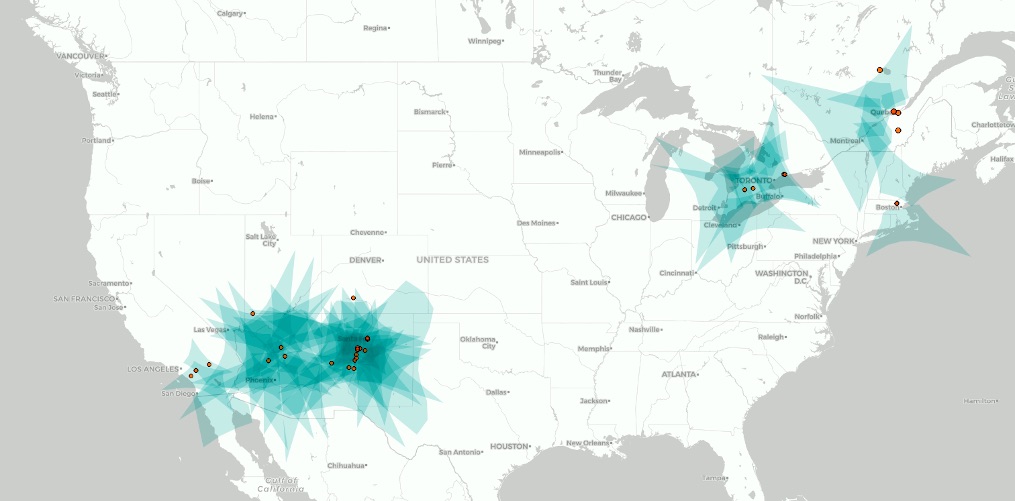Every summer, Canadian stargazers are treated to a dazzling display in the form of the Perseid meteor shower: a phenomenon that occurs every year as the Earth passes through the trail of dust and debris left behind by Comet Swift-Tuttle on its way around the Sun.
Yet while meteor showers like the Perseids are easy to predict, most meteors that pass through our night skies are not. Meteors come from pieces of debris or dust that break off of asteroids or comets as they orbit the Sun, but the majority of these objects aren’t regularly monitored. This makes it tricky for scientists to predict when and where they’re going to occur — and because meteors may also burn up completely in the Earth’s atmosphere, by the time one is spotted, it’s often too late to gather scientific observations.
This is where the Global Meteor Network, or GMN, comes into play. Led by Denis Vida, a postdoctoral researcher at Western University, the GMN is a network of more than 450 video meteor cameras across the globe that aims to capture footage of these rare events as they occur.
A global network of eyes on the skies
“The main operational goal of the project is to establish a decentralized, science-grade instrument which observes the night sky every night of the year from as many locations around the world as possible,” Vida explained in a press release.
Because meteors come from ancient objects like asteroids and comets, which date back to the origins of our Solar System, studying them can help scientists shed light on how our Solar System formed. Tracking meteors can also help scientists learn about the locations of asteroids and comets in outer space, which is important to keep in mind when launching satellites and rockets.
To help obtain these important observations, Vida and colleagues have spent the past four years installing video cameras in the backyards of amateur and professional astronomers across the world.
While many astronomical observations can be scheduled in advance and obtained from professional telescopes, meteors can occur anywhere in the world, and can typically only be seen from a distance of 300 kilometres before they burn up. It’s for these reasons that a global network of cameras is crucial.
Raspberry Pi computers help cut costs
Professional-grade telescopes can cost hundreds of millions of dollars to build and maintain — a price tag that would make installing a global network of meteor-monitoring telescopes impractical. But the GMN team realized that they could take advantage of compact Raspberry Pi computers to obtain their observations at a fraction of the cost.
“A few friends and I realized that we can use low-cost Raspberry Pi single-board computers and reduce the cost of a single meteor observing system by 10 times, allowing us to install many more cameras than was previously possible,” Vida explained.
In a new publication in the Monthly Notices of the Royal Astronomical Society, Vida and colleagues describe how they programmed the Raspberry Pi computers to obtain, process, and save observations from the video cameras. Because these compact computers don’t come with large amounts of storage, one of the main challenges was creating an algorithm that could reduce the file sizes while maintaining as much scientifically important information as possible.
Overall, the meteor monitoring systems Vida and colleagues designed cost $200 USD each. This low price means that many systems can be installed around the world, and amateur astronomers who are interested in getting one for themselves can do so at a reasonable cost.
450 cameras and counting
Today, the GMN team has installed more than 450 cameras in 23 different countries around the world. This large spatial coverage means that the team has been able to track more than 220,000 meteors to date, with more being added to their public meteor map every day.

Going forward, the team plans to continue expanding their network. By gathering more observations, they will help shed light on the locations and properties of meteors — and maybe even predict future meteor showers before they occur.
Interested meteor enthusiasts can join the Global Meteor Network by ordering a system online or requesting instructions on how to build one from scratch.









































